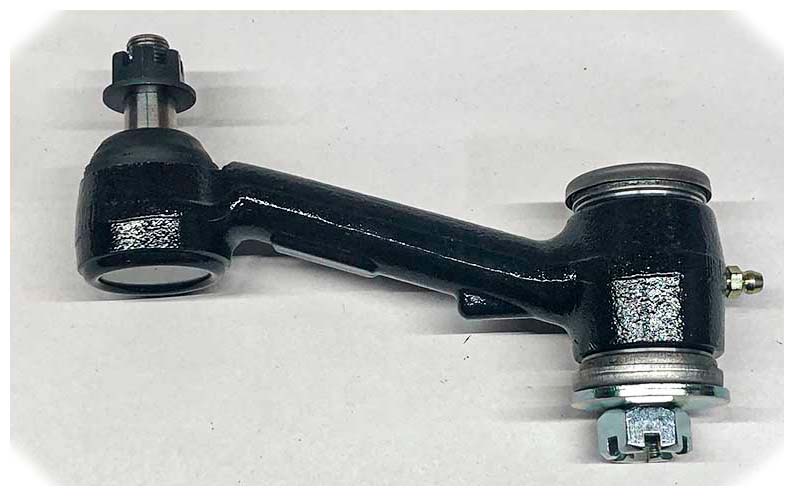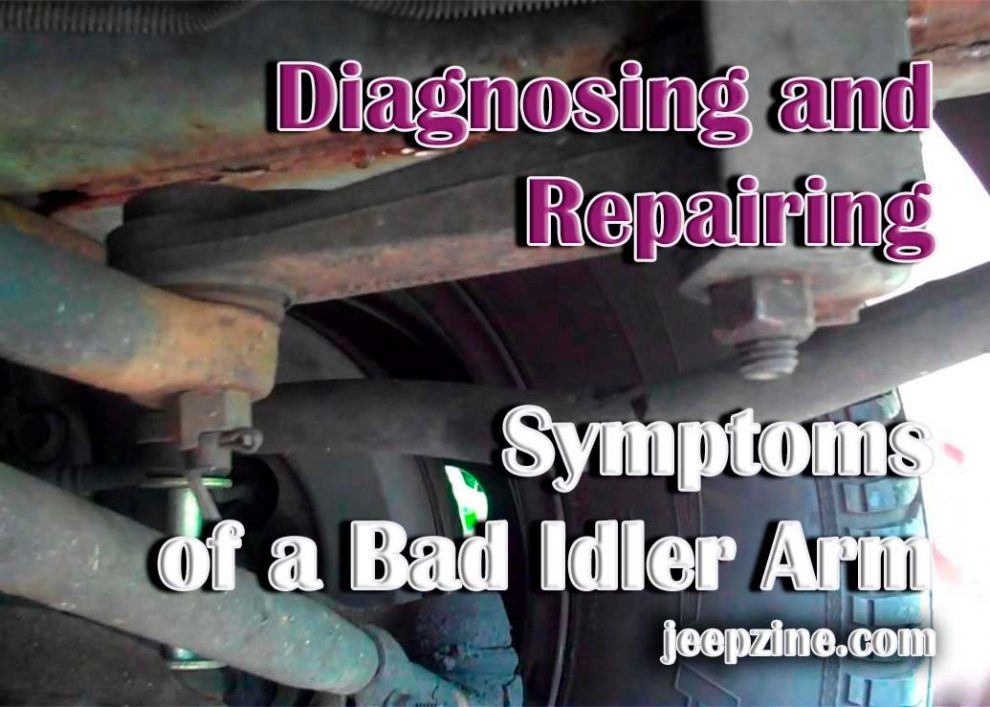If you’re having trouble with your car’s steering, it could be a sign that the idler arm needs to be replaced. The idler arm is a critical part of the car’s suspension system, and it helps keep the steering wheel in line. When an idler arm is worn or damaged, it can cause poor handling and jarring vibrations. Knowing what symptoms to look for and how to diagnose them can save you time and money in repair costs. In this article, we’ll discuss how to diagnose a bad idler arm as well as how to replace it in your vehicle.
What Is an Idler Arm?

Purpose of an Idler Arm
The purpose of an idler arm is twofold. It helps to keep the steering wheel in line, and it also helps absorb road shocks. As the car is driven, the idler arm acts as a buffer between the frame and suspension parts, absorbing shock and helping maintain proper wheel alignment. Without an idler arm, your vehicle would have trouble steering around corners and uneven terrain.
Symptoms of a Bad Idler Arm
The idler arm plays a critical role in the steering system of a vehicle, providing support and stability to the steering linkage. When the idler arm begins to wear or fail, several symptoms may manifest, indicating a potential issue with this component.
-
Steering Play: One of the primary symptoms of a bad idler arm is increased steering play or looseness in the steering wheel. You may notice that the steering feels less responsive, requiring more effort to keep the vehicle on a straight path. The steering may feel loose or have excessive play, causing a lack of control and potential handling issues.
-
Vibrations and Shaking: A worn idler arm can lead to vibrations and shaking in the steering wheel, especially when driving over uneven surfaces or at higher speeds. The vibrations may become more pronounced as the wear on the idler arm progresses, affecting the overall comfort and stability of the vehicle.
-
Uneven or Excessive Tire Wear: As the idler arm deteriorates, it can cause improper alignment and uneven tire wear. You may notice that the tires wear more on one side or exhibit irregular patterns, indicating a need for realignment. It is important to address this issue promptly to prevent further damage to the tires and ensure proper handling.
-
Clunking or Rattling Noises: A failing idler arm may produce clunking or rattling noises, especially when turning the steering wheel or driving over bumps. These noises may be a result of the loose or worn-out components within the idler arm assembly, and they can become more noticeable as the wear progresses.
-
Steering Instability: A worn idler arm can affect the stability of the vehicle’s steering, particularly during cornering or sudden maneuvers. You may experience a sense of instability or a tendency for the vehicle to drift or pull to one side, requiring constant steering corrections to maintain a straight path.
If you notice any of these symptoms, it is advisable to have the idler arm inspected and replaced if necessary. Ignoring a failing idler arm can lead to unsafe driving conditions and potentially more significant damage to the steering system. After addressing any idler arm issues, it could be beneficial to learn about How to Replace Control Arm Bushings, adding another layer of maintenance proficiency to your DIY vehicle upkeep skills.
How to Diagnose a Faulty Idler Arm
Diagnosing a bad idler arm can be done by inspecting the component for signs of wear and tear, as well as looking for other symptoms such as clunking noises or steering play. If you suspect that the idler arm is the cause of your vehicle’s handling issues, it may be necessary to inspect the steering linkage and suspension components for any signs of damage. It is also important to check the wheel alignment, as an incorrectly adjusted alignment could lead to uneven tire wear and other steering problems.
How to Replace an Idler Arm
Replacing a bad idler arm is a relatively straightforward process that can be completed with the proper tools and knowledge. Start by loosening the bolts securing the idler arm to the frame, and steering linkage. Then, disconnect any other components attached to the old arm, such as stabilizer bars or control arms. Once these parts are removed, you can remove the old idler arm from its mountings and install a new one in its place. Ensure all the components are properly aligned and secured before replacing any of them. Finally, when all the parts have been re-installed, test drive your vehicle to ensure everything is functioning correctly.
Conclusion
The idler arm plays an important role in maintaining optimal steering control for your vehicle. Knowing what symptoms to look out for and how to diagnose them can help you identify potential issues before they become more serious. If your vehicle displays any signs of a bad idler arm, it is best to have it replaced as soon as possible to avoid further damage or unsafe driving conditions. With proper diagnosis and repair, you’ll be back on track quickly!


Add Comment